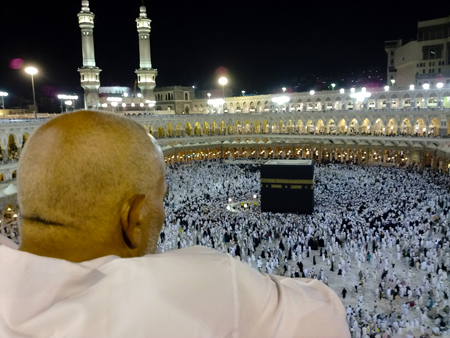| << Chapter < Page | Chapter >> Page > |
Some religious scholars consider Confucianism more of a social system than a religion because it focuses on sharing wisdom about moral practices but doesn’t involve any type of specific worship; nor does it have formal objects. In fact, its teachings were developed in context of problems of social anarchy and a near-complete deterioration of social cohesion. Dissatisfied with the social solutions put forth, Kung Fu-Tzu developed his own model of religious morality to help guide society (Smith 1991).
In Taoism, the purpose of life is inner peace and harmony. Tao is usually translated as “way” or “path.” The founder of the religion is generally recognized to be a man named Laozi, who lived sometime in the sixth century B.C.E. in China. Taoist beliefs emphasize the virtues of compassion and moderation.
The central concept of tao can be understood to describe a spiritual reality, the order of the universe, or the way of modern life in harmony with the former two. The ying-yang symbol and the concept of polar forces are central Taoist ideas (Smith 1991). Some scholars have compared this Chinese tradition to its Confucian counterpart by saying that “whereas Confucianism is concerned with day-to-day rules of conduct, Taoism is concerned with a more spiritual level of being” (Feng and English 1972).
After their Exodus from Egypt in the 13th century B.C.E., Jews, a nomadic society, became monotheistic, worshipping only one God. The Jews’ covenant, or promise of a special relationship with Yahweh (God), is an important element of Judaism, and their sacred text is the Torah, which Christians also follow as the first five books of the Bible. Talmud refers to a collection of sacred Jewish oral interpretation of the Torah. Jews emphasize moral behavior and action in this world as opposed to beliefs or personal salvation in the next world.

Islam is monotheistic religion and it follows the teaching of the prophet Muhammad, born in Mecca, Saudi Arabia, in 570 C.E. Muhammad is seen only as a prophet, not as a divine being, and he is believed to be the messenger of Allah (God), who is divine. The followers of Islam, whose U.S. population is projected to double in the next 20 years (Pew Research Forum 2011), are called Muslims.
Islam means “peace” and “submission.” The sacred text for Muslims is the Qur’an (or Koran). As with Christianity’s Old Testament, many of the Qur’an stories are shared with the Jewish faith. Divisions exist within Islam, but all Muslims are guided by five beliefs or practices, often called “pillars”: 1) Allah is the only god and Muhammad is his prophet, 2) daily prayer, 3) helping those in poverty, 4) fasting as a spiritual practice, and 5) pilgrimage to the holy center of Mecca.

Today the largest religion in the world, Christianity began 2,000 years ago in Palestine, with Jesus of Nazareth, a charismatic leader who taught his followers about caritas (charity) or treating others as you would like to be treated yourself.
The sacred text for Christians is the Bible. While Jews, Christians, and Muslims share many of same historical religious stories, their beliefs verge. In their shared sacred stories, it is suggested that the son of God—a messiah—will return to save God’s followers. While Christians believe that he already appeared in the person of Jesus Christ, Jews and Muslims disagree. While they recognize Christ as an important historical figure, their traditions don’t believe he’s the son of God, and their faiths see the prophecy of the messiah’s arrival as not yet fulfilled.
Different Christian groups have variations among their sacred texts. For instance, Mormons, an established Christian sect, also use the Book of Mormon, which they believe details other parts of Christian doctrine and Jesus’ life that aren’t included in the Bible. Similarly, the Catholic Bible includes the Apocrypha, a collection that, while part of the 1611 King James translation, is no longer included in Protestant versions of the Bible. Although monotheistic, Christians often describe their god through three manifestations that they call the Holy Trinity: the father (God), the son (Jesus), and the Holy Spirit. The Holy Spirit is a term Christians often use to describe religious experience, or how they feel the presence of the sacred in their lives. One foundation of Christian doctrine is the Ten Commandments, which decry acts considered sinful, including theft, murder, and adultery.
Sociological terms for different kinds of religious organizations are, in order of decreasing influence in society, ecclesia, denomination, sect, and cult. Religions can be categorized according to what or whom its followers worship. Some of the major, and oldest, of the world’s religions include Hinduism, Buddhism, Confucianism, Taoism, Judaism, Islam, and Christianity.
Consider the different types of religious organizations in America. What role did ecclesia play in the history of the United States? How have sects tended to change over time? What role do cults have today?
What is your understanding of monotheism versus polytheism? How might your ideology be an obstacle to understanding the theism of another religion you’re unfamiliar with?
In American society, do you believe there is social stratification that correlates with religious beliefs? What about within the practitioners of a given religion? Provide examples to illustrate your point.
PBS’s Frontline explores “the life of Jesus and the rise of Christianity” in this in-depth documentary. View the piece in its entirety here: (External Link) .
For more insight on Confucianism, read the Analects by Confucius, at (External Link) . For a primer on Judaism, read Judaism 101 at (External Link) .
Sorting through the different Christian denominations can be a daunting task. To help clarify these groups, go to (External Link) .
Craig, Mary, transl. 2002. The Pocket Dalai Lama . Boston, MA: Shambhala.
Feng, Gia-fu and Jane English, transl. 1972. “Introduction” in Tao TeChing . New York: Random House.
Holy Bible: 1611 Edition, King James Version. 1982 [1611]. Nashville, TN: Thomas Nelson.
Smith, Huston. 1991 [1958]. The World’s Religions . San Francisco, CA: Harper Collins.

Notification Switch
Would you like to follow the 'Introduction to sociology' conversation and receive update notifications?